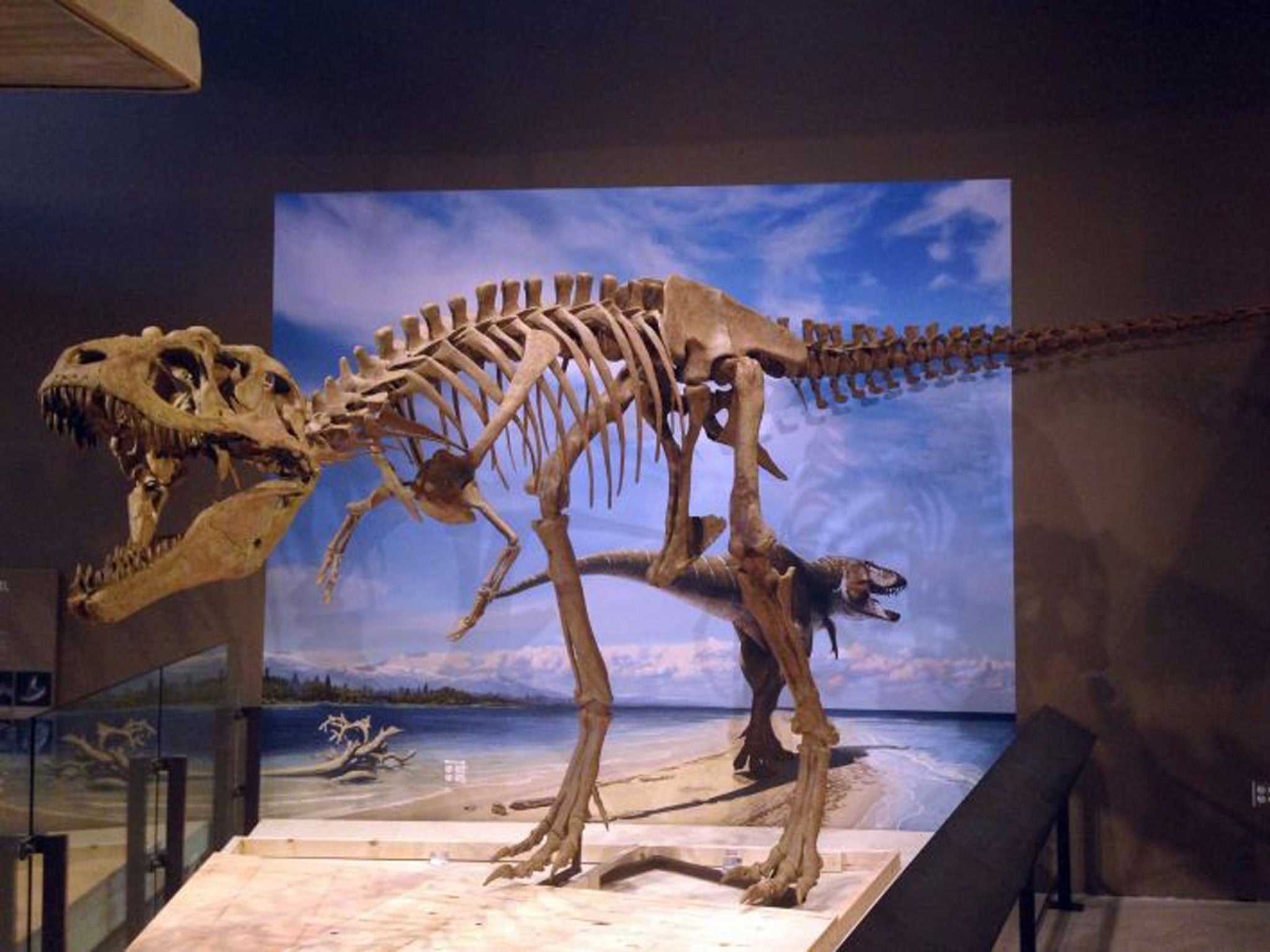Lythronax argestes: Scientists discover new ‘King of Gore’ dinosaur species that is ‘great-uncle’ to T-rex
Discovery of 24ft (7.3m) long, 8ft (2.4m) high predator changes our understanding of evolution of tyrannosaur family

Scientists have discovered a massive new species of dinosaur, which they have named Lythronax argestes or “king of gore”, that changes our understanding of the way the Tyrannosaurus rex evolved.
The dominant predator of its time, Lyrthonax is thought to have roamed the Earth around 10 million years before its “great-nephew” T-rex.
It had fearsome large teeth, short arms and a head that was significantly wider at the back, a lot like its near relation. Measuring 24 feet (7.3 metres) long, the new species was slightly smaller than the later predator made famous in the novel and films of Jurassic Park.
Lythronax’s bones were unveiled yesterday at the Natural History Museum of Utah in Salt Lake City, and an official announcement of the species discovery was published in the scientific journal Public Library of Science ONE.
Scientists say the discovery could help them better understand the ecosystem where the dinosaur roamed, and added that estimates of the date of its existence have a big impact on other species as well.
First discovered by workers for the Federal Bureau of Land Management in eastern Utah in 2009, scientists have now named the animal Lythronax argestes, which in full means “king of gore of the south west”, for its large teeth, apparent dominance as a predator and location in the land masses of the time.
“Discovering the Lythronax pushes back the evolution of the group that gives rise to T-rex, which is something we didn't understand before,” said Mark Loewen, a geologist at the University of Utah, who led the dig for the new dinosaur. “Lythronax is like the great-uncle of T-rex.”
Paleontologists had thought that members of the group with characteristics like T-rex - large bodies, tiny arms, thick skulls and forward facing eyes - dated as far back as 70 million years, but the Lythronax shows signs of being at least 80 million years old.
Like its relative, the Lythronax is believed to have been the top predator of its time, roaming a stretch of land from Mexico to Alaska, including parts of Utah, during the Campanian stage of the Late Cretaceous period.
“The really cool thing is that this shows that the origins of the last known tyrannosaurs were in the southern part of North America as opposed to Asia or far North America,” as previously thought, said Andrew Farke, curator at the Raymond M. Alf Museum of Paleontology in Claremont, California.
Photos of the fossil remains of the newly discovered species were sent to Loewen and his team soon after they were discovered at the southern end of the Grand Staircase-Escalante National Monument, on the Utah-Colorado border.
The group spent the following two years retrieving, preserving and assembling the bones. Then, they traveled to locations where other bones from the tyrannosaur group were being studied, including China; Birmingham, Alabama; Washington, D.C.; and New York.
The Lythronax bones were set between layers of volcanic ash, which allowed scientists to determine the age of the dinosaur by studying the decomposition of the ash crystals that surrounded them.
“This sort of discovery is very interesting and exciting because it's not just another animal from that era but a large predator from that era,” said paleontologist Peter Roopnarine, who studies the ecology of dinosaur periods for the California Academy of Sciences.
Roopnarine said being able to learn about the Lythronax will reveal more about the ecosystem at the time of its reign.
“This is going to change our understanding of this older ecosystem,” Roopnarine said.
Subscribe to Independent Premium to bookmark this article
Want to bookmark your favourite articles and stories to read or reference later? Start your Independent Premium subscription today.

Join our commenting forum
Join thought-provoking conversations, follow other Independent readers and see their replies